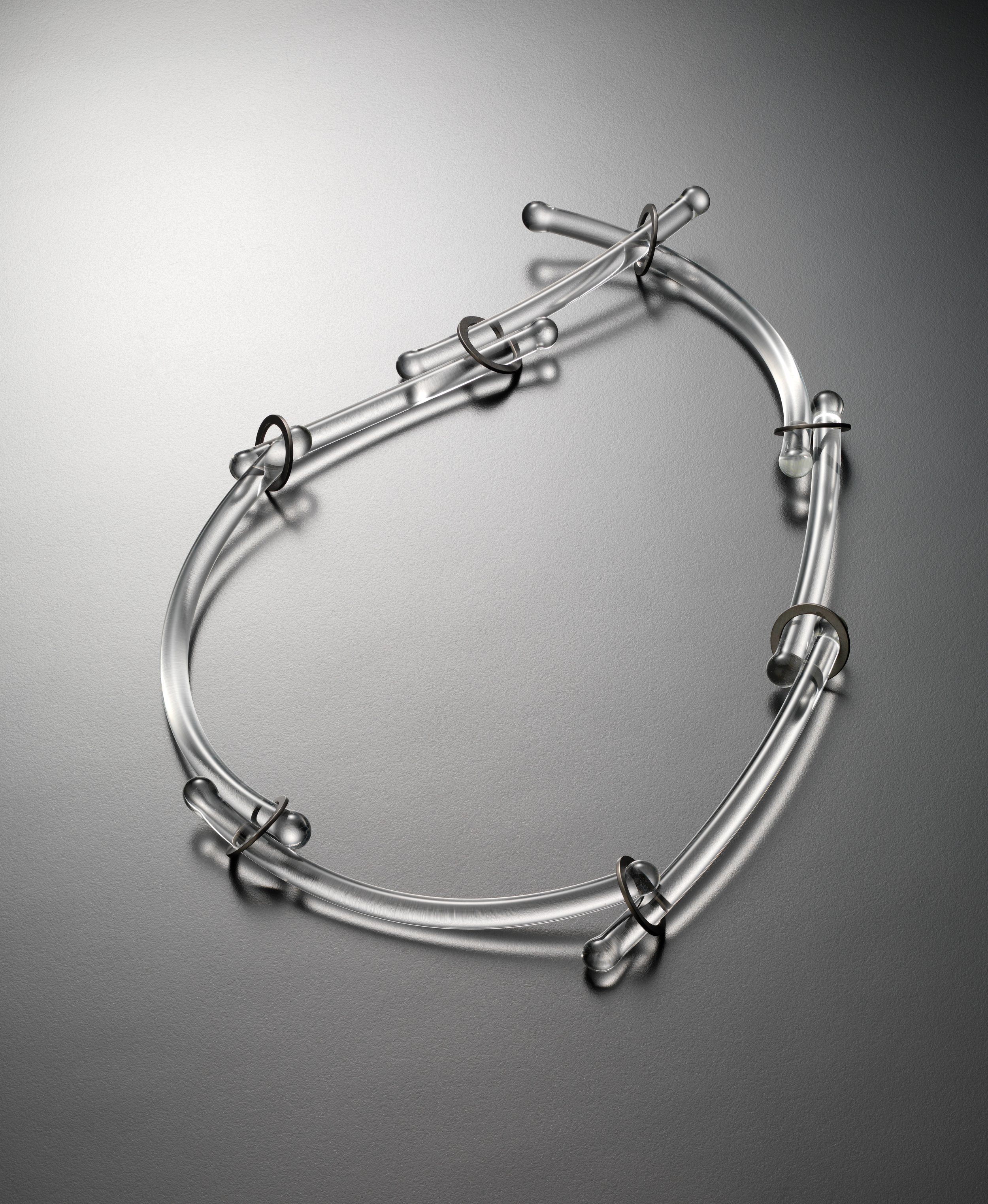Exhibition Insight... Blanche Tilden - Ripple Effect: a 25 year survey
With a unique approach to materials, this 25-year survey of contemporary jeweller Blanche Tilden’s work showcases the evolution of her practice from her time as an undergraduate to now. Developed by Geelong Art Gallery, and featuring historical and contemporary works loaned from public and private collections, Ripple Effect speaks to Tilden’s labour-intensive practice and her endless fascination with the essence, feeling and materiality of glass.
Ripple effect: The continuing and spreading results of an event or action
This exhibition surveys 25 years of the work of acclaimed Melbourne based jeweller Blanche Tilden, however it commences with the inclusion of several important student works made during her undergraduate studies at the Canberra School of Art. These reveal Tilden’s early capacity to combine mastery of technique with what we see is an enduring preoccupation with, and abiding respect for the material and aesthetic properties of glass and metal.
The multi-disciplinary nature of Tilden’s practice has evolved over time. She began her career working solely with glass – focused on mastering a technically demanding material. She then became interested in making jewellery with glass, and began to combine glass with metal, industrial materials such as rubber, and found objects to discuss broader themes around the relationship between people, technology, and the build environment. At various times, as this exhibition reveals, Tilden has focussed her attention on particular objects, such as the bicycle chain or examples of architecture, such as the Crystal Palace, built in London for the Great Exhibition of 1851.
At the centre of Tilden’s practice is an understanding of traditions and transitions in jewellery. The making and wearing of jewellery are central to expressions of human identity – for her as a marker and for the wearers of her objects. Each of Tilden’s works is made to move and be worn.
The key themes that predominate in Tilden’s works are circularity; geometric form; repetition and gradation; lightness; precision and mechanical movement; freedom of movement.
Tilden’s unique repurposing of industrial and salvaged materials proposes redefinitions of the value and meaning of the jewellery object.
Additionally, by abstracting and translating the visual language and materials of architecture, the built environment and the everyday into jewellery, Tilden’s work explores real and symbolic aspects of the material culture of our time and place.
The ripple effect that activates Tilden’s labour-intensive practice is that work begets work – through discipline and inspiration. What ripples from the centre outwards is Tilden’s endless fascination with the essence, feeling and materiality of glass. Each key series in her oeuvre – Light moves; Chain reaction; Cutting edge; Carte Blanche; Fer et Verre; Wearable cities; Clear cut; and the new series Ripple Effect presents itself here as a distinct ripple in a fluid, spreading body of work.
Blanche Tilden, Flow 03 (necklace) 2016, borosilicate glass and titanium. Toowoomba Regional Art Gallery, Queensland Photographer: Grant Hancock. © Blanche Tilden
Blanche Tilden, Buoy 03 (necklace) 2016, borosilicate glass and oxidised 925 silver. Courtesy of the artist and Gallery Funaki, Melbourne Photographer: Grant Hancock. © Blanche Tilden
Blanche Tilden–ripple effect: a 25 year survey is a Geelong Gallery touring exhibition. This project has been assisted by the Australian Government’s Visions of Australia program. In the creation of new work, Blanche Tilden was supported by the Australian Government through the Australia Council for the Arts
Blanche Tilden–ripple effect: a 25 year survey is showing in Gallery One at JamFactory Adelaide until 1 May 2022.
Presented as part of Cache: a celebration of jewellery and Adelaide Fringe Festival at West Village.


